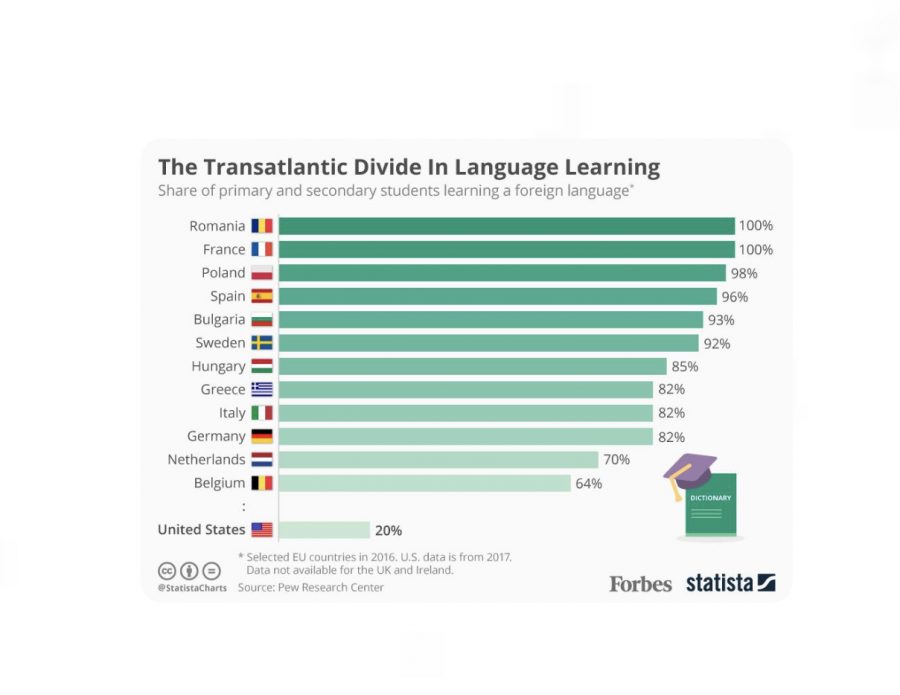Translating the American language
Foreign Language enrollment continues to decline in US educational system
THIS JUST IN: American isn’t a language at all!
In a world filled with various languages, the so-called ‘nation of immigrants’ has managed to restrict itself by only focusing on the English language. The United States educational system undermines the importance of foreign languages.
While other countries place an emphasis on their children learning multiple languages at an early age, most Americans aren’t exposed to a secondary language until high school.
It is becoming increasingly unlikely to encounter a bilingual American as colleges, including CF, have seen a decline in the enrollment of foreign language courses.
According to a Pew study from 2018, only 20 percent of K-12 students in America study a foreign language, (compared with an average of 92 percent in Europe), and only 10 states and the District of Columbia make foreign-language learning a high school graduation requirement.
The United States issue with foreign language doesn’t stop in grades K-12, it continues as students work towards their college degrees.
Enrollment in foreign languages dropped 9.2 percent, and foreign language offerings dropped 5.3 percent at colleges and universities between fall 2013 and fall 2016, according to the Modern Language Association.
While everyone is focused on the pandemic, the epidemic of Monolingualism (only speaking one language), is growing across the United States at an alarming rate.
We may kid ourselves by trying to achieve a monolingual nation, but the reality is that we live in a multilingual world where being bilingual isn’t a plus, but a necessity.
Being successful on a global scale requires that American students of all ages are taking foreign languages more seriously, governments at both the state and National level should increase spending towards having qualified foreign language teachers.
People often say that, “If you want something done right, you should do it yourself,” yet we as Americans, irresponsibly rely heavily upon translators, whether they be human or technological, to communicate with one another.
CFs Vice President of Enrollment Management and Student Affairs, Dr. Saul Reyes said at CF, “Foreign language is required for all AA and Baccalaureate students, though foreign language enrollment is not higher because degrees don’t require languages.”
The pandemic showed us that all countries are vulnerable, and being able to communicate with one another is crucial in hard times.
A Pew Research study found that the percentage of students learning a foreign language in school across European countries is at a median of 92%, while America lags behind at 20%.
In a study of 1,100 higher education institutions in the United States, only 12% require intermediate-level language study, according to the American Council of Trustees and Alumni.
This is unacceptable, we as a nation simply must do better regarding not only the importance we place on foreign languages, but our acceptance of them as well.
Jean Scheppers, Associate Professor of Foreign Language at CF, stresses the importance of being multilingual and between herself and her four children they speak between two to seven languages each.
Scheppers said, “publicly speaking a foreign language in the US is seen by a significant number of people in a negative way as a lack of ability or intelligence, for our country.”
The lack of respect both from the education system and public is an issue our country has regarding foreign languages being spoken in public.

Your donation will support the student journalists of College of Central Florida. Your contribution will allow us to purchase equipment and cover our annual website hosting costs.



